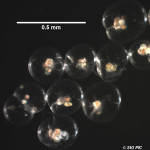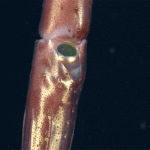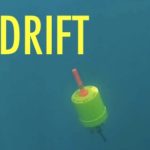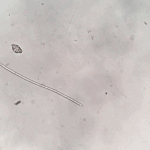There’s a sizable red tide event unfolding in Australia right now, where thick slicks of red planktonic algae are washing up on Sydney’s iconic beaches, including the most famous beach in the whole country: Bondi. Web news sources are replete with dramatic pictures; I especially liked this one of vermilion surf juxtaposed with the tuquoise of the Bondi Icebergs swimming pool that juts out off the beach there:

More recent stories say that the biolomunescent light show at night is something to behold, but unfortunately I can’t seem to find a good video of that. Here’s what the critter itself looks like, massively embiggenated, courtesy of Oceana

This particular bloom has been attributed to the predatory dinoflagellate Noctiluca scintillans, which is indeed biolominescent, as this nice image from the Gippsland Coastal Board nicely illustrates. This species probably blooms in response to blooms of its prey, which are smaller plankton. These, in turn, respond to pulses of nutrients; in this case as a result of a discrete upwelling event.

I would dearly love to see video of the bioluminescence at Clovelly, Bondi or Stanwell, and I bet I’m not alone. Perhaps if you are reading this and you live in the Sydney Beaches area you could check it out this evening and snag some video for us.






http://www.gearsoftimes.com/red-beaches-glow-blue/
Super, thanks for the link Matt
Localized wind-drift aggregations of Noctiluca I’ve seen at beaches in New Zealand have always been a nice pink, rather than tomato red. But apparently the colour varies depending upon what they’ve been eating, which can include wind-blown pollen according to an algologist colleague. Strange organism.